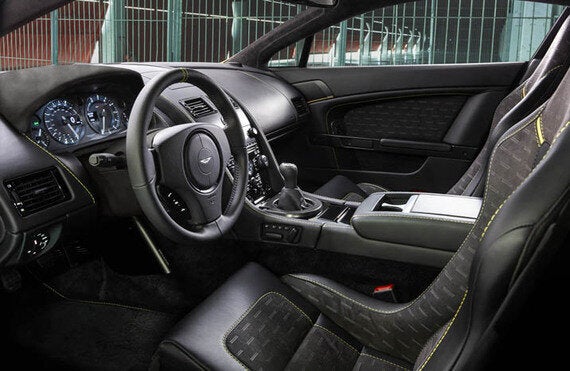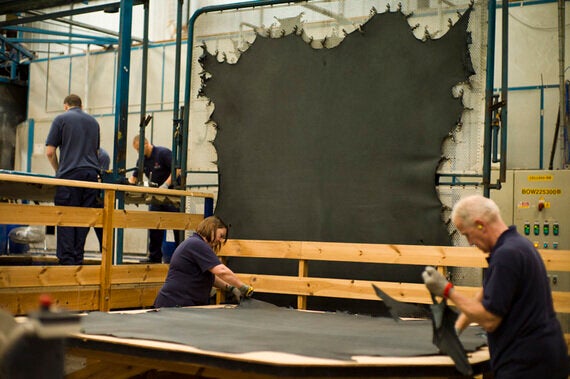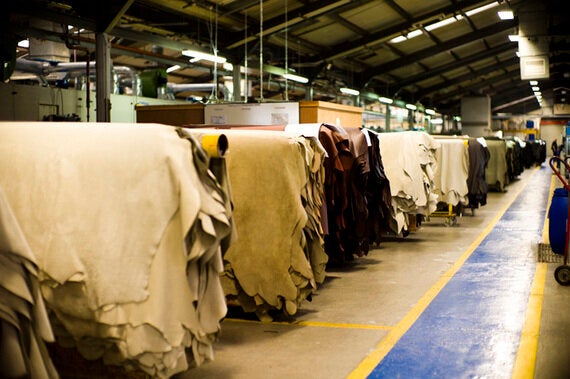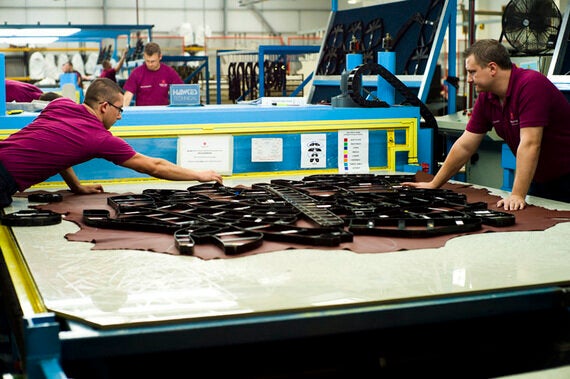
The motoring community this week will be feasting their eyes on the new offerings that parade the halls of the Geneva PalExpo: such as the global launch of the Jaguar F Type Coupe or XFR-S Sportbrake, the Aston Martin DB9 Carbon edition and the Vantage N430, or perhaps the Range Rover Evoque Autobiography and the new Range Rover Sport models, all of which are providing quite a banquet indeed. I however, turn my menu upside down and head towards Scotland where, it is not my eyes that are binging, but my in fact, my sense of touch and smell that are the pioneers here.
In 1758, when John Muirhead opened a leather tannery in Glasgow, I wonder if he had ever imagined that over two hundred and fifty years later, his leather business would be providing the seating material and interiors for some of the world's most luxurious motorcars, specifically those mentioned above. It was not until 1905 when John's great nephew Arthur Muirhead bought a second tannery and the Bridge of Weir name was established. To this day the company, which lies beside the banks of the River Gryfe, in Renfrewshire is now part of the Scottish Leather Group and continues to have the Muirhead family members on the board leading the way.

Bridge of Weir start right from the beginning, from the management of the cattle, ensuring the fields are free from barbed wire, (allowing the cows a healthy and unmarked skin), tanning and production process right through to the Thermal Energy Plant (TEP) where waste is converted directly to energy for heating the huge volumes of recycled water required in the manufacturing process. The group has since acquired the highest rating for low carbon manufacturing; it is the only TEP in the leather industry. The result is the finest quality Scottish Low Carbon Leather, from hides that have travelled an average of just 96km from the abattoirs to the tannery using cutting-edge technology. Bridge of Weir has its very own loch where 200,000,000 litres of water is sourced each year for the leather production process.

Tanning can take up to two weeks and there are two different ways, Mineral or chrome free, both effective, providing sustainability at all levels. Soaking, Liming, Fleshing, Splitting, Bating, are just some of the procedures that occur in the tanning process and believe me, it can take your breath away when you stand and watch the hide turn to a leather.

It takes nine hides to make up the interior of an Aston Martin Rapide, with each piece being carefully chalked out for markings and strengths to the leather; the craftsman gets to see the grain at close inspection and allows for positioning in accordance with the utility inside the car. With many cutting tables of two people on each, the pattern blocks are placed down swiftly and the Rapide interior earns its name from the off.

The plant has recently brought in new weighing mechanisms, making the process more efficient, yet still keeping the manpower, something which the company pride themselves on, to maintain a full hands on approach to the leather making business. With the advancement of heated seats the factory has a whole process of perforation and adjustment of the leather. With a reliable and faithful workforce, the traditional apprenticeship schemes are honoured with huge respect.
From supplying leather to Henry Ford at the turn of the 20th century for the ground breaking Model T, to the first luxury range extended electric car, the Fiskar Karma, along with the recent desirability of the Aston Martin, Range Rover and Jaguar marques, Bridge of Weir is busier than ever. At Geneva this year, BoW leather features on the beautiful new Volvo Concept Estate, the third of three new concepts from Volvo's new design chief Thomas Ingenlath, who selected this historic leather company for all three and all of which so far have won concept awards at the motor show they debuted at. 2014 marks 31 years of BoW and Volvo working together.
The automotive industry aside this fine Scottish company supplies leather to luxury yachts, private aircraft and to the Houses of Parliament: it really has come a long way since the days of a simple tannery.
So whilst the motoriety looks to Geneva at new designs and exteriors, I if you don't mind will just take a back seat and enjoy the view of a red leather hide, of which will soon be stitched onto my race car seat. I like the fact that my cow didn't have any spots and I hope when you sit in your car you might take a moment to open your nose and feel the leather.
Seats you may have sat upon:
Ford Model T (Until 1927), Citroen DS (Until 1965), Jaguar XJS (1975 - 1996), Range Rover (1970 - present), Jaguar XJ220 (1992 - 1994) , McLaren F1 (1994 - 1998) , Mercedes, Benz SLS AMG (2009 - present), Aston Martin One-77 (2009 - 2010), Jaguar C-X75 concept (2010), Jaguar C-X16 concept (2011), Land Rover DC100 concept (2011) Houses of Parliament, House of Lords.
Lara Platman is writing a book about woman in motor sport, called GIRL RACERS crowd published by Unbound. With thanks to Bridge of Weir for the factory tour.
Photographs by Lara Platman and Aston Martin media